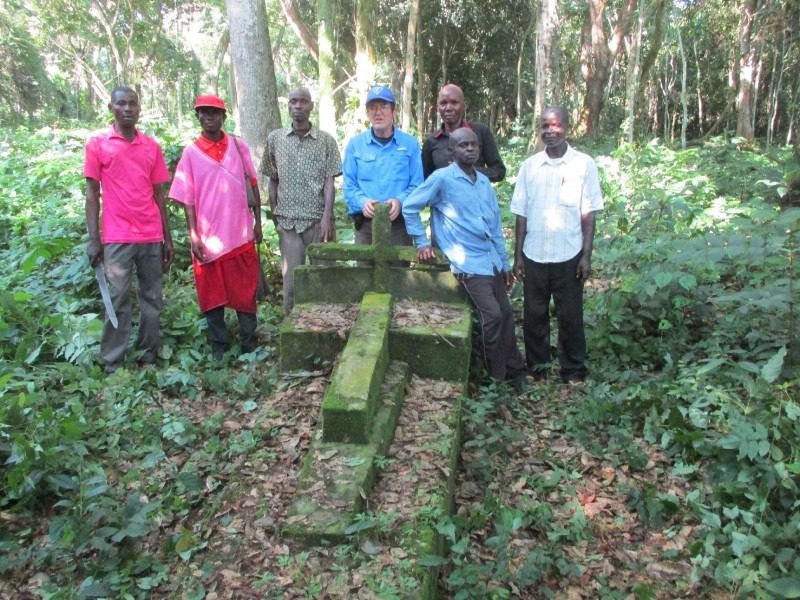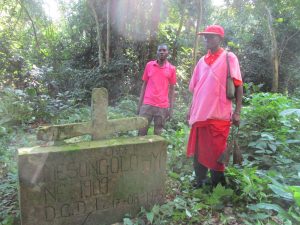
We live at Kikongo, but Kikongo’s history has its roots
at the village of Kinkosi (literally “of the lion“).
Around 1923, some Congolese from Western Congo crossed
the Kwango River to trade. As they went, they told stories. They told
Bible stories and showed people that they could write letters on the
ground that could be read and understood. Their listeners heard
stories about children learning how to read and write, and about
hospitals to treat those who were sick.
Young people were intrigued by the thought of
bringing these messengers to Kinkosi. A couple of young men by the
name of Samuel Matobo and Meso Ngolo (Strong Eyes) set off on a ten
day trek to Sona Bata where a Baptist mission had been established.
They made their request to the missionary, but were told that no
pastor could be spared at that time to go to Kinkosi on the other side
of the Kwango River. Meso Ngolo made at least two other trips to Sona
Bata before his request was granted and a pastor could be found for
the area.
In 1926, Missionary Moody went to Kinkosi and found
500 people gathered from the villages around. Of those, 79 were
baptized and a church was born. Two years later some more
missionaries arrived and found 2,000 people that Pastor Nzonzi had
managed to assemble. There was a delegation of 23 chiefs who
requested the establishment of a church center in their area.
The missionary conference of 1928 was so impressed
with the Kinkosi experience, they decided to establish a mission
station between the Kwango and Wamba Rivers. Missionaries Charles and
Viola Smith were chosen to establish a new station. After spending
three months prospecting the area, a site was selected in 1929. Rita
and I have had the honor and privilege of living at this site later
named “Kikongo” for the past 28 years.

In November I rode my bike to Kinkosi and was shown the grave
of chief Meso Ngolo. The man who had the “strong eyes” of faith.
He had the “strong eyes” and faith to see what God was doing and
wanted to do, even if he had to walk days, repeatedly to
get help for the benefit of the area for generations to come.